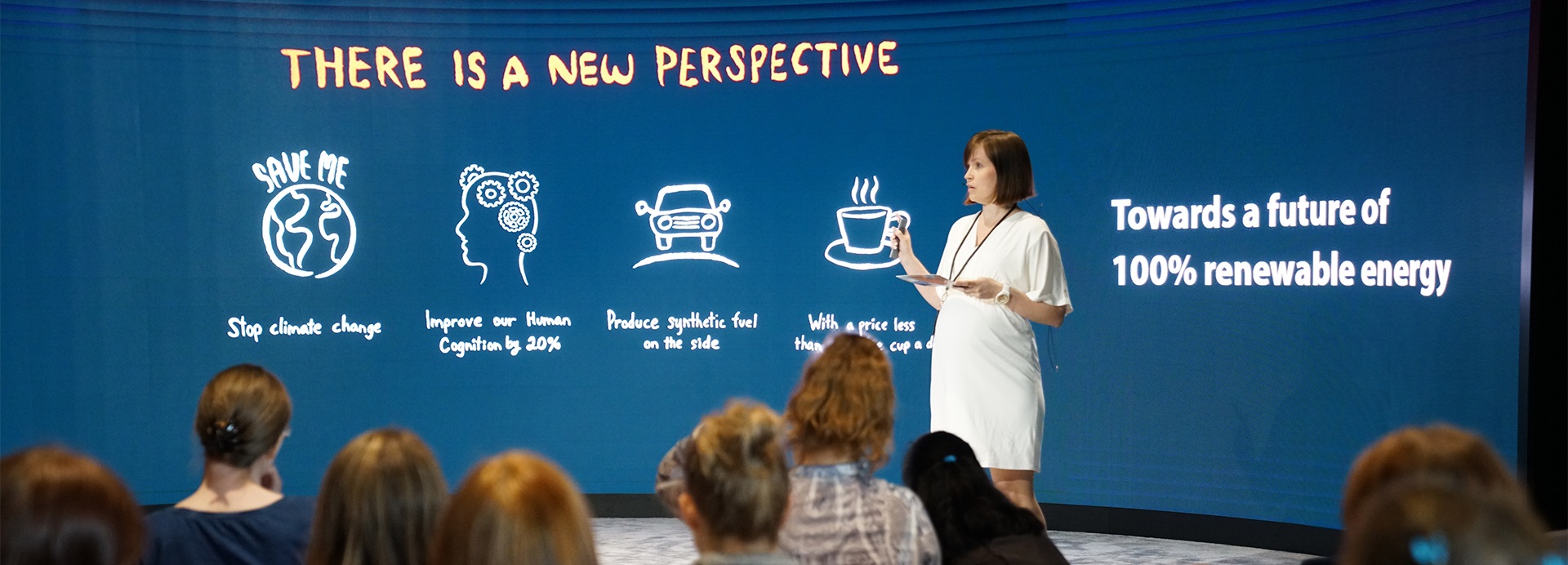

Power-to-X (P2X) is a process that creates carbon neutral and renewable fuels by capturing CO2 from the atmosphere and combining it with hydrogen extracted from water. By doing so, it is hoped that we can eliminate the need for fossil fuels in the future.
While this process has the potential to be a gamechanger in the world’s ongoing battle to reverse climate change, Wärtsilä realised very quickly that it is simply not possible to change the world alone. In order to ensure this is something that can and will make a difference, it called upon numerous start-up and established companies to join forces and change the world.
A Finnish beginning
The Power-to-X journey at Wärtsilä began in 2017 with a visit to Lappeenranta-Lahti University of Technology (LUT), an esteemed academic campus located in the southeast of Finland. At the same time Nebraska Public Power District, a Wärtsilä customer, got in touch to see if P2X was something that could work for them. The two then worked together to see if there were shared possibilities.
The following year, Wärtsilä launched a P2X SparkUp Challenge for startups as part of its vision for the energy market, known as ‘Towards a 100% renewable energy future’. Not only did this competition attract more than 100 companies from all over the world, it provided a good overview of the startups in the P2X sphere and a starting point for the further exploration of technology.
Speaking at a Wärtsilä-led online forum in October 2020 entitled ‘Creating a Power-to-X Ecosystem’, Eleonor Hedström, Senior Manager of New Business Portfolio at Wärtsilä Energy explains that the journey has been a learning process. “This is something that has evolved piece by piece over time. It has allowed us to get a really good understanding of the power tech possibilities, where the technologies are and where things are moving, both in Finland and around the world,” she says.
A close P2X ecosystem partner is Finland-based Nordic energy company St1, which has been collaborating with Wärtsilä since the world-leading Slush startup event in 2018. The companies share the goal of accelerating the global energy sector’s transition to sustainable energy generation. St1 has a vision of becoming a leading producer and seller of CO2-aware energy in the region and beyond. Riitta Silvennoinen, Director of Future Energy Business, said at the same event: “At St1, we see the huge potential of P2X and its value chain. It can be used as a powerful tool in the work against climate change, but also as a sustainable business possibility for us.”
Costs bring new opportunities
Winning technologies need to enable profitable business. This applies to sustainable technologies as well. Companies will generally look directly at the bottom line and how much P2X will cost them in comparison to the latest petroleum and biofuel advances. As this is a new field, knowledge is not widespread and customers want to know what the concept is all about, its efficiency levels and where it will be ready. The biggest question, however, is: when can we start using them and do you already have them?
Silvennoinen is confident these questions can already be answered. “We are always asked if it is possible to make drop-in fuels or does it require new infrastructure or vehicles?
We can confidently say that we will have all the parts in place, and we will be able to produce different kind of fuels, as well as drop-in fuels as new fuels like hydrogen - if required by our customers - so it makes a huge difference when talking to customers.
In terms of cost, there is an acknowledgement that P2X will, at least for the time being, be slightly more expensive than other alternative fuels. However, when asked about this, Tommi Rintamäki, Senior Manager, Power-to-X at Wärtsilä, says that this is no longer a matter of cost, but rather about making a fundamental change. “What is the price of climate change?” he asks. “We need to do something fast. This will cost, yes, but it is also a huge opportunity that will create many jobs and change the way we fuel the planet.”
Turning to the future
In fact, Rintamäki believes getting the P2X concept off the ground is only just the beginning and that the time has come to take the next step. “Along with the other members of the ecosystem, we have proved the technology is ready. Now it is time to start thinking about industry pilots rather than small-scale pilots,” Rintamäki says.
Silvennoinen is also cautiously optimistic about the future, although she does sound a note of caution. “Working in the traffic fuel sector, we are very reliant on European legislation and mandates. This means there is no market for synthetic fuels until they are treated the same as advanced biofuels. However, across marine and other sectors, there is a willingness to succeed and that will make the difference”, she envisages.
What remains clear is that collaboration, a determination to work together and bringing in fresh ideas is crucial to seeing this process through to completion. “Only by onboarding other innovative companies can we succeed in continuing at such pace. It is important to work with our partners to see the big picture and offer customers the chance to start shifting to 100% renewables already today. It is crucial to share info on this. We are not in competition here, but instead we are learning together in order to make this happen,” Rintamäki concludes.
Did you like this? Subscribe to Insights updates!
Once every six weeks, you will get the top picks – the latest and the greatest pieces – from this Insights channel by email.


